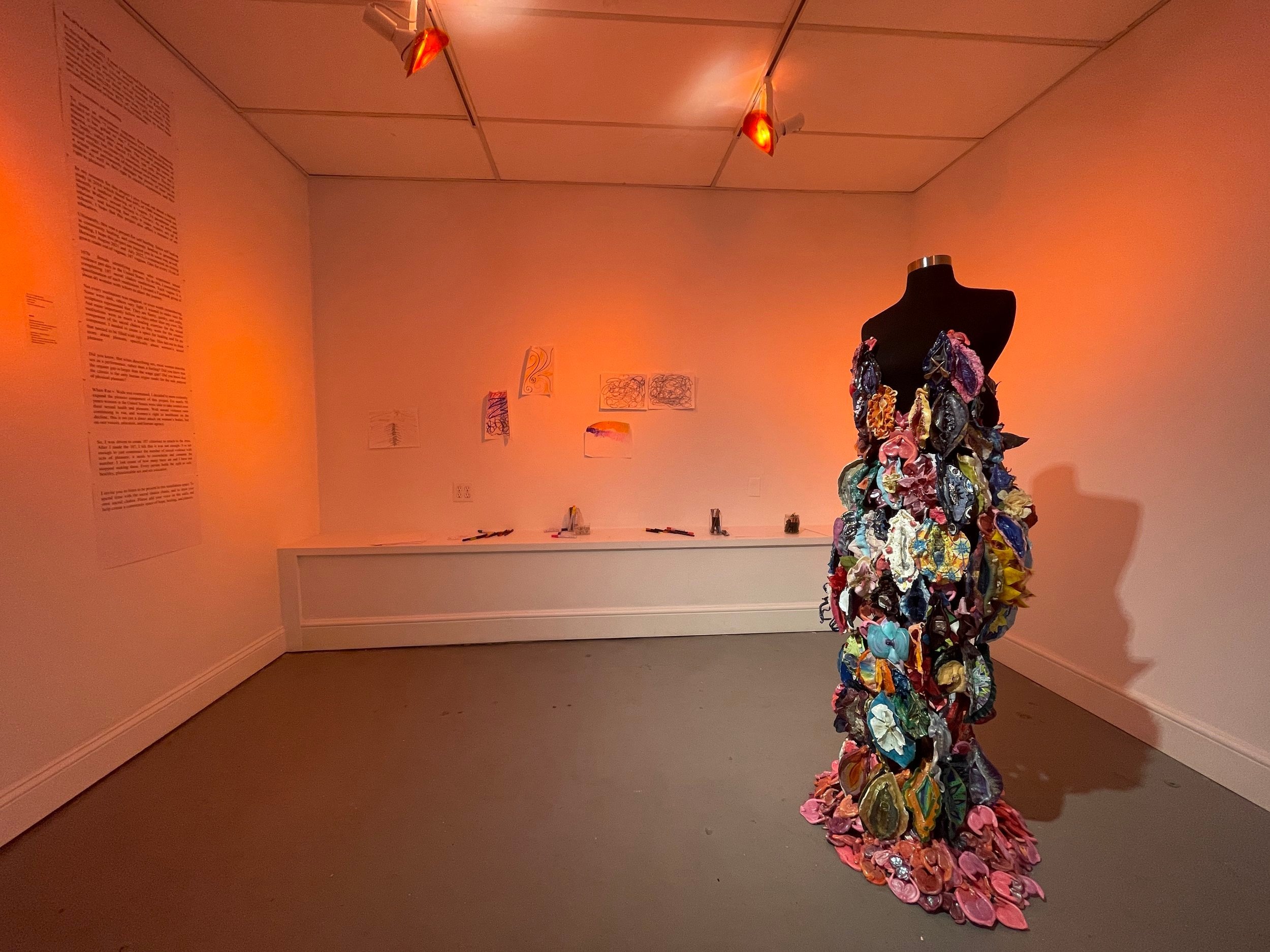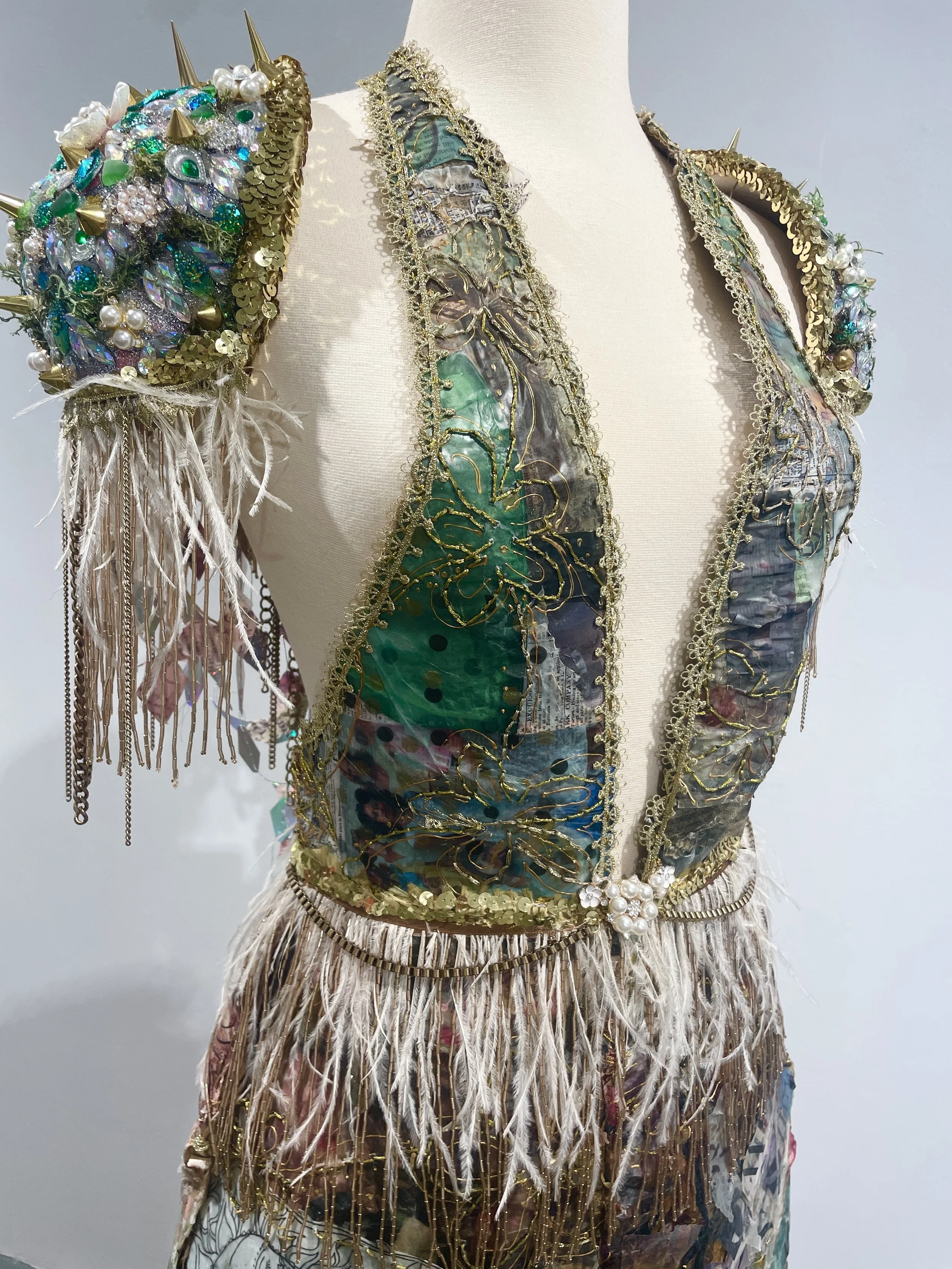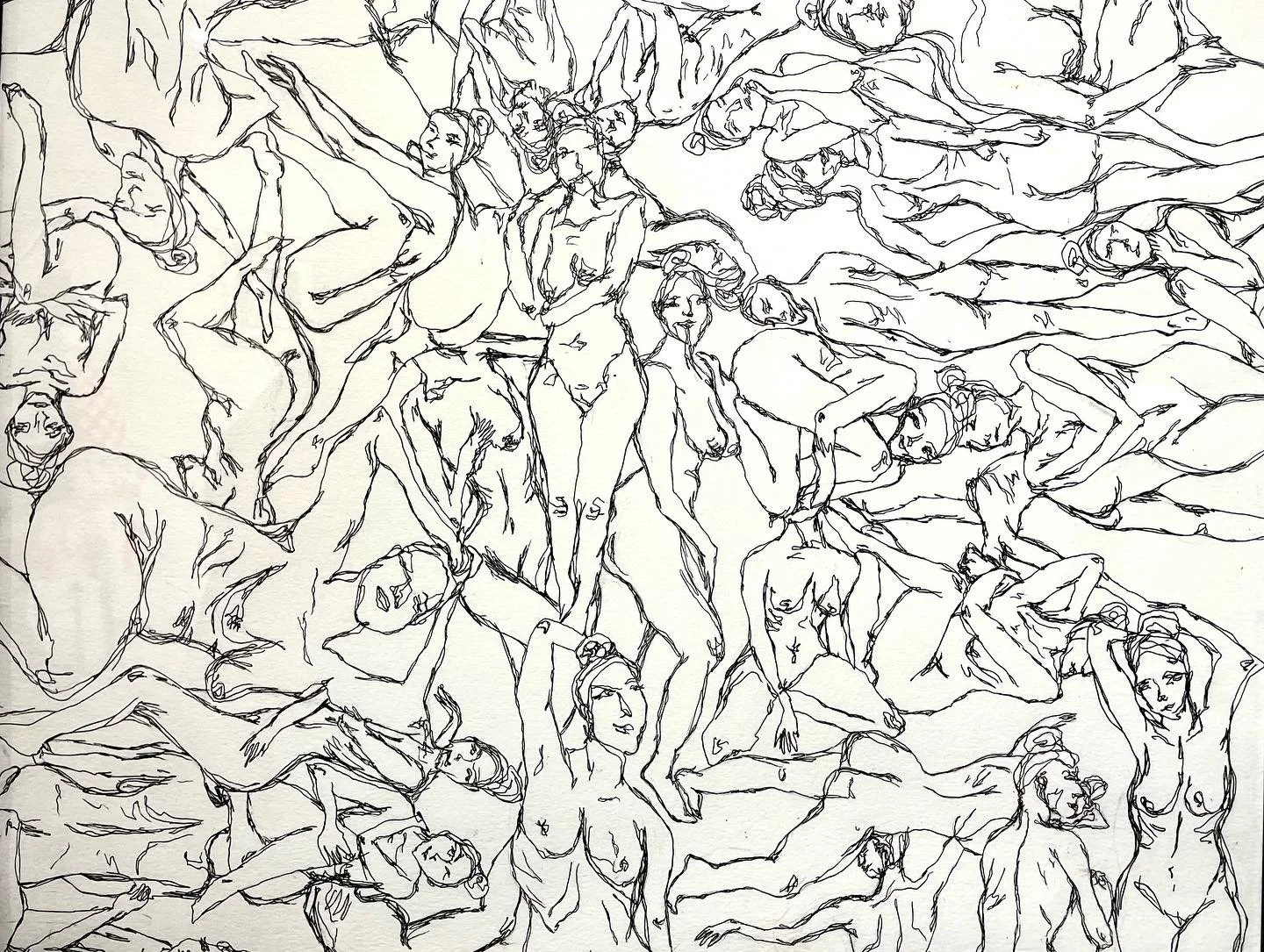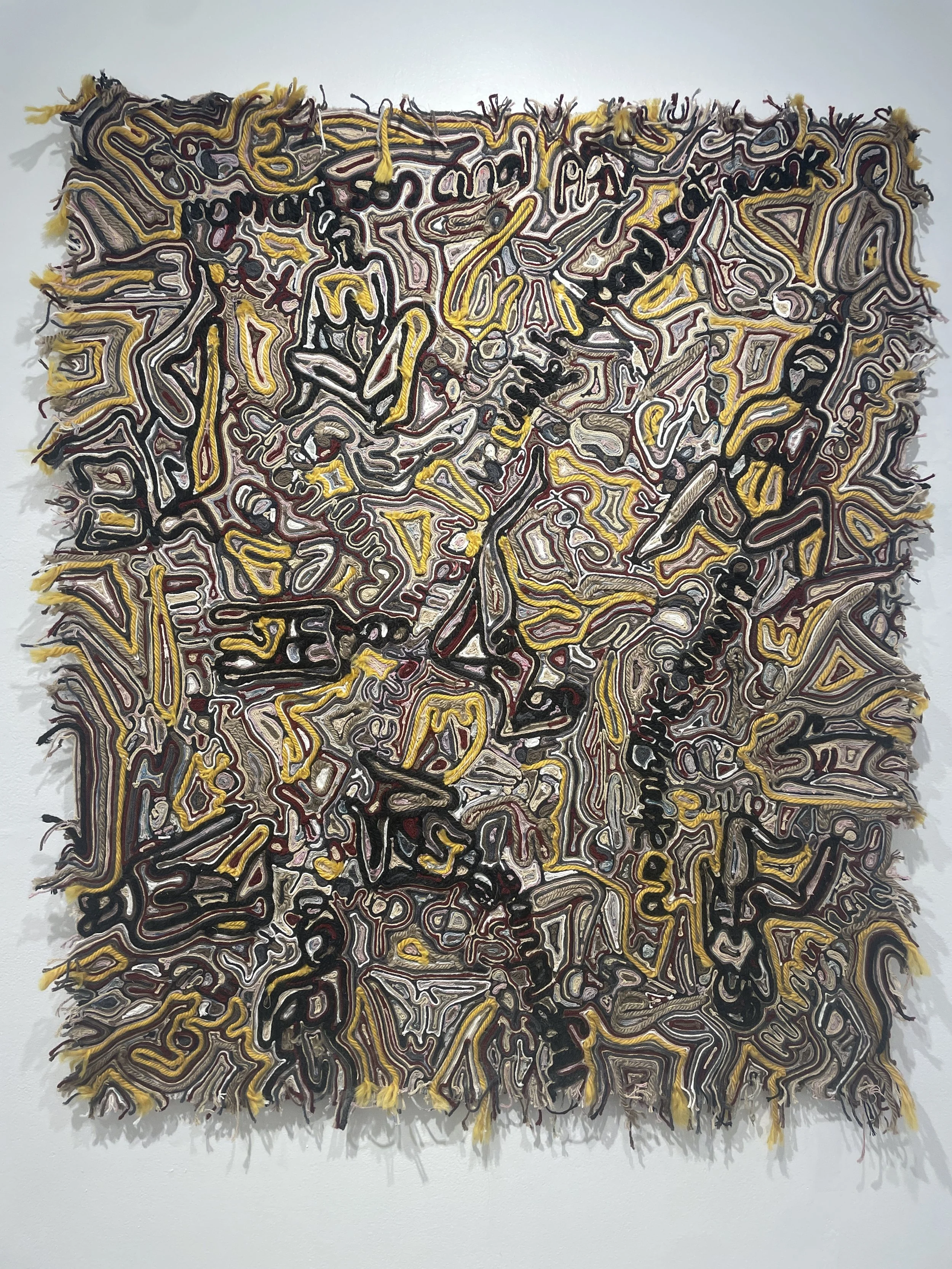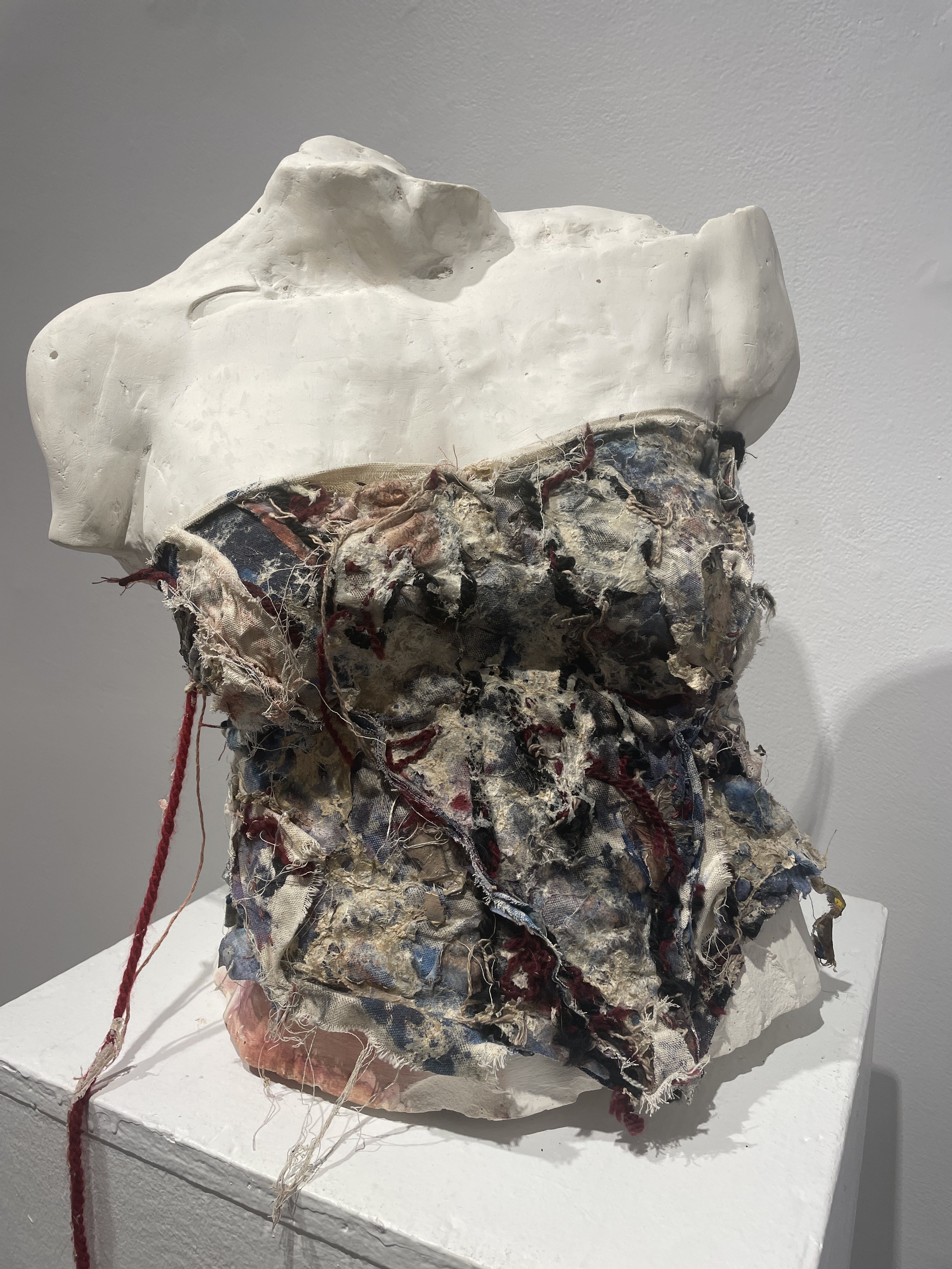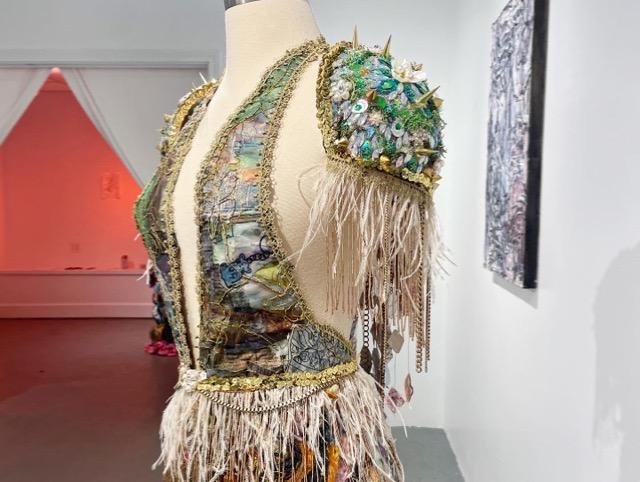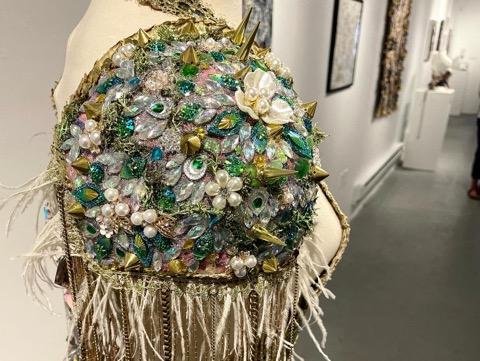Sonja Czekalski presents: Body/Image
September 10- October 11, 2022
I am intrigued by the idea of the body versus the image. The body I picture myself to have, versus the body in the picture. The body in the mirror, versus the body I imagine. The body in real life, versus the body on social media or on pornographic websites. The illusion of the body versus the authentic body. A body designed to be active, strong, and child-bearing, versus a body designed by social constructs to believe we are in constant need of rectification. The body, which should be so common and accepted, yet is objectified, sexualized and many times, taboo.
This body of work is the accumulation of five years of artistic practice. In my early works on canvas and paper I explore gender, identity, and representation. Most of the images come from Google searches for the word, “woman.” This Google search quickly leads to pornography. It is intriguing to learn that this gender descriptor is immediately over-sexualized on the internet.. I am interested in how this translates to one’s own explorations of self and gender identity. I am curious about the correlation between the feminine body and its representation, and how this affects one’s physical, mental, and sexual health. It is estimated that over 50 percent of women experience body dysmorphia and over 70% of millennial women admit to disordered eating. Nearly 30% of young girls in the United States inflict self harm. With unreported calculations intact, 80% of women experience sexual assault or harrassment in their lifetime. In Body/Image, visual expressions of these analyzed questions and statistics are layered to create patterns over portraits, fabrics, and collages of collected objects. Across these pieces I look to address the personal within the political, and the individual within the collective narrative.
Yes, it’s a Vagina Dress.
In the Spring of 2021, I read Unreported by Kaley Roberts and learned that nearly 75% of sexual assaults against female identified persons are Unreported. According to RAINN.org, there are 463,634 victims of sexual assault each year in the United States. 90% of these victims identify as female. This accumulates to 390,283 women per year, 1,070 women per day, and a population where 81% of women claim to have been sexually assaulted or harassed in their lifetime.
These numbers are daunting.
To quote an anonymous response from another community project of mine, “I cannot disconnect my being female from the trauma it has gifted to me.” Generations and populations of trauma, violence, pain, and rape. The sexual energy center on the body, called the Sacral Chakra, not only houses one’s sexual energy, but creativity, emotions, and pleasure. The act of sexual violence strips one of their power over their own body as a whole and permanently damages the power of their sacral chakra. As well as their right to creative expression, and their right to pleasure.
In my research for this project I also found out about a British study in 2016 which found that 44% of 1000 women could not identify a medical drawing of a vagina. To paraphrase artist Sophia Wallace, sexual literacy is Cliteracy. As an artist and educator, and knowing that only 9 states require sex ed in schools, I hope that this project also offers a resource of sex education.
Ultimately, this was a project for self healing. Since self healing is community healing, and community healing is generational healing, I hope this project can inspire you in some way as well.
Between August 2021 and July 2022, I constructed an evening gown made out of vaginas; 107 vaginas. One for every 10 out of 1070 female identifying persons who experience sexual violence per day in the United States. To do this, I committed to completing 107 sacral chakra meditations. Each vagina is a manifestation of each meditation. I created a Facebook group of about 40 women with whom to share the journey.
Not every meditation was magical, or even worth remembering. Some were dark, others very light. I wanted to make sure the sculptures represented that. They are funny, quirky, and crafty. And more importantly follow no rules other than my own. The meditations were as much a healing exercise for the sexual component of the sacral chakra as they were for the creative component. I needed to create a space for healing and for me that needed to be filled with light and fun. This led me to think more about pleasure, specifically about women’s sexual pleasure.
Did you know, that when describing sex, most women describe sex as a performance, rather than a feeling? Did you know that the orgasm gap is larger than the wage gap? Did you know that the clitrois is the only human organ made for the sole purpose of physical pleasure?
When Roe v. Wade was overturned, I decided to more evidently expand the pleasure component of this project. For nearly 50 years women in the United States were able to take control over their sexual health and pleasure. With sexual violence rates continuing to rise, and women’s right to healthcare on the decline, this is not just a direct attack on women’s bodies, but on our voices, education, and human agency.
So, I was driven to create 107 clitorises to attach to the dress. After I made the 107, I felt that it was not enough. It is not enough to just counteract the number of sexual violence with acts of pleasure, it needs to overwhelm and consume the number. I lost count of how many there are and I have not stopped making them. Every person holds the right to safe, healthy, pleasureable sex and sex education.
I invite you to listen to be present in this installation space. To spend time with the sacral chakra chants, and to draw your own sacral chakra. Please add your voice on the walls, and help create a community space of hope, healing, and pleasure.
